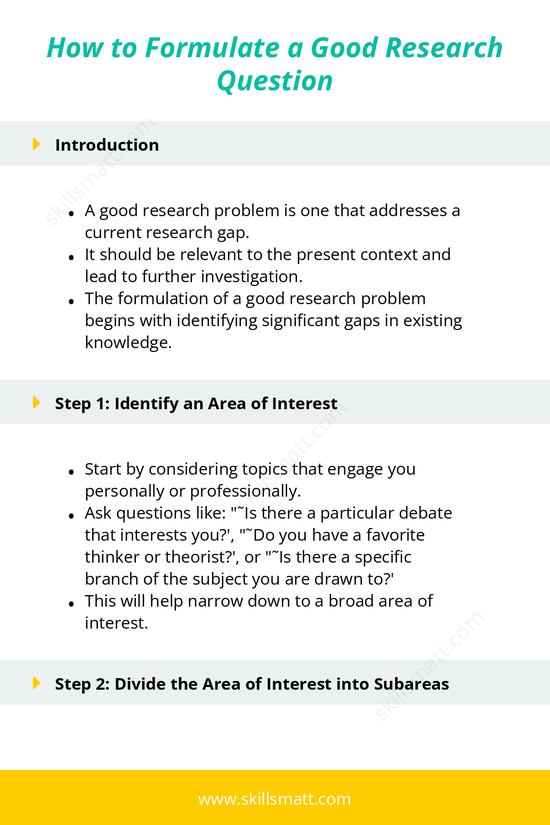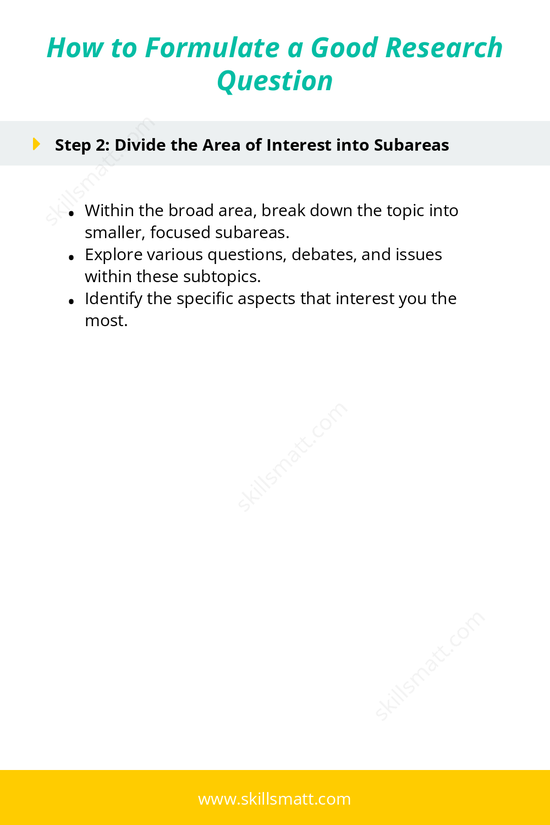How to Formulate a Good Research Question
Introduction
- A good research problem is one that addresses a current research gap.
- It should be relevant to the present context and lead to further investigation.
- The formulation of a good research problem begins with identifying significant gaps in existing knowledge.
Step 1: Identify an Area of Interest
- Start by considering topics that engage you personally or professionally.
- Ask questions like: 'Is there a particular debate that interests you?', 'Do you have a favorite thinker or theorist?', or 'Is there a specific branch of the subject you are drawn to?'
- This will help narrow down to a broad area of interest.
Step 2: Divide the Area of Interest into Subareas
- Within the broad area, break down the topic into smaller, focused subareas.
- Explore various questions, debates, and issues within these subtopics.
- Identify the specific aspects that interest you the most.
Step 3: Select a Specific Area of Interest
- After evaluating the subareas, choose the one that captures your focus.
- This will lead you to better define the objective and scope of your research.
Step 4: Find the Research Gap
- Review scholarly materials like books, articles, and journals to identify areas with insufficient research or unresolved debates.
- Analyze the arguments and findings within your chosen subarea to pinpoint a gap in the literature.
- This research gap is the foundation for your research problem.
Step 5: Formulate the Research Problem
- Based on the identified gap, develop your research problem.
- The research problem should clearly define your research objectives and scope.
- Ensure the problem is neither too broad nor too narrow, and make sure it is feasible within the available resources and time frame.
Conclusion
- Formulating a good research question requires careful identification of interests, exploration of subareas, and recognition of research gaps.
- A well-formulated research problem sets the foundation for a successful and meaningful research study.


